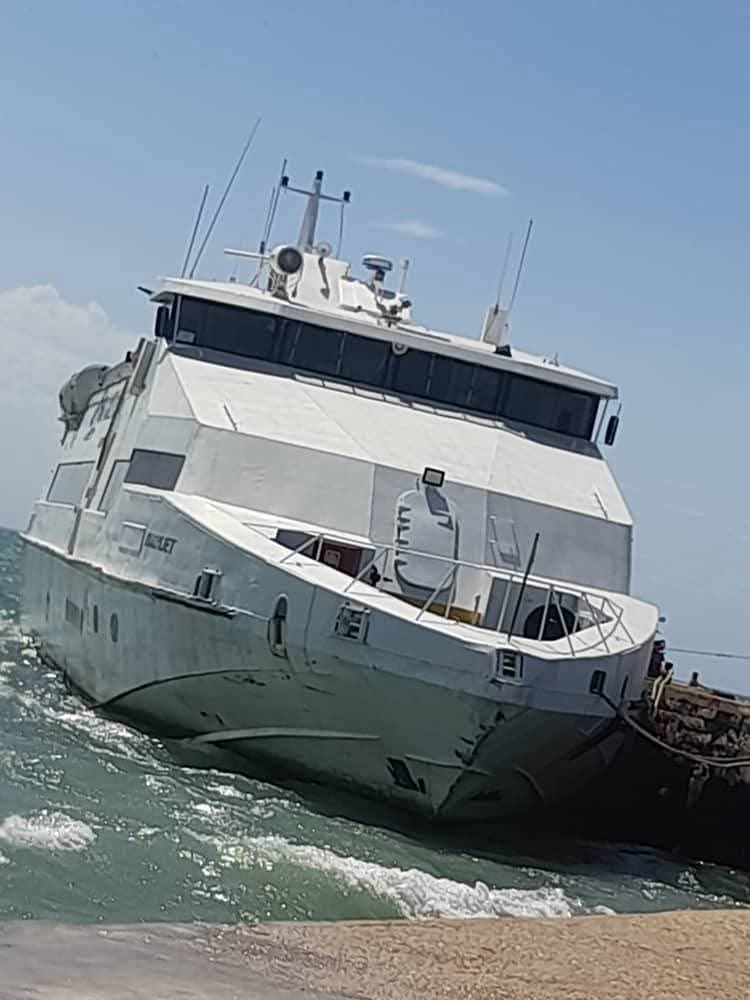
The release of the new $50 polymer notes will be delayed for Montserrat, says Governor of the Eastern Caribbean Central Bank Timothy N.J. Antoine.
The ECCB Governor was speaking at the launch of the new series of polymer notes for the central bank from their offices in Grenada. He explained that as Montserrat and also Anguilla have a large stock of the paper notes, there was no need for the new notes to be put into circulation on those islands until supplies dwindled.
This was confirmed by representatives of the local banks who attended the launch which was streamed at the Montserrat office of the ECCB on Wednesday morning. The local financial institutions collectively purchase bank notes to reduce costs and did not need the new notes.
 The $50 polymer note will be released in June across the Eastern Caribbean Currency Union. The plan is to roll out the $100, $20 and $10 notes around September of this year and the $5 note around September 2020.
The $50 polymer note will be released in June across the Eastern Caribbean Currency Union. The plan is to roll out the $100, $20 and $10 notes around September of this year and the $5 note around September 2020.
 Governor Antoine said in his remarks that “from an economic standpoint, polymer notes are more cost-effective than paper. Although polymer notes are more expensive to produce upfront, their extended lifespan means that the notes are replaced less often. Consequently, there will be a reduction in transportation and handling costs thus reducing the overall cost of cash for the ECCB, commercial banks and credit unions.
Governor Antoine said in his remarks that “from an economic standpoint, polymer notes are more cost-effective than paper. Although polymer notes are more expensive to produce upfront, their extended lifespan means that the notes are replaced less often. Consequently, there will be a reduction in transportation and handling costs thus reducing the overall cost of cash for the ECCB, commercial banks and credit unions.
“As part of our due diligence, the ECCB consulted with colleagues from the Bank of England, the Bank of Scotland and the Bank of Canada on their experiences with changing from paper to polymer.
Compared to paper notes, polymer notes are:
- Cleaner: resistant to dirt and moisture;
- More secure: they have advanced security features which make them harder to counterfeit;
- More durable: they last at least, three times longer; and
- More environmentally friendly.
 “The switch to polymer necessitated some changes to the designs of the notes in respect of technical and security specifications. However, even with these new design elements, we were careful to maintain a degree of familiarity for ease of use. Very importantly, we have incorporated a feature (raised bumps) to make it easy for the blind and visually impaired to handle their money and their business. At this juncture, I wish to recognise the advocacy of John Rullow, who a decade ago, approached the Ministry of Finance in Grenada and made an appeal for features that catered for the blind and visually impaired,” shared Governor Antoine.
“The switch to polymer necessitated some changes to the designs of the notes in respect of technical and security specifications. However, even with these new design elements, we were careful to maintain a degree of familiarity for ease of use. Very importantly, we have incorporated a feature (raised bumps) to make it easy for the blind and visually impaired to handle their money and their business. At this juncture, I wish to recognise the advocacy of John Rullow, who a decade ago, approached the Ministry of Finance in Grenada and made an appeal for features that catered for the blind and visually impaired,” shared Governor Antoine.
The $50 note bears the image of the late Governor, the Honourable Sir K Dwight Venner.

“Once again, I hail the colossal contribution of my illustrious predecessor. We are particularly pleased that Lady Venner has been able to join us for this special occasion. We wish to publicly thank Lady Venner and her family for their enormous sacrifice and support in sharing Sir Dwight with the people of the Currency Union, as Governor, for more than quarter of a century,” said Antonie.
Angela Estwick, the ECCB Representative on Montserrat has been educating community groups about the use and care of the new notes. She confirmed that she has met with the Montserrat Association for Disabled Persons (MAPD) to teach them about how visually impaired people can use the notes. She has also spoken at the Rotary and Rotaract club meetings, Boys and Girls Brigade, and the Davy Hill Community among others.
The education programme will continue as the notes come into circulation. As unfit paper notes are returned to the Central Bank and the current inventory of paper notes is depleted, they will be replaced by polymer notes. The public can expect to see both paper and polymer notes in circulation at the same time. They are both legal tender.
Discover more from Discover Montserrat
Subscribe to get the latest posts sent to your email.







